Waterwise home Guide
From the source to your tap, being waterwise starts with you!
Water typically is collected from a natural water source and then goes through pumps, treatment and pipes before it is delivered to your home. Find out more about water’s journey (PDF, 1.0MB). Looking after the water source is important, and so is using water wisely. Ensuring you are waterwise in your home (PDF, 185KB), as well as in the garden (PDF, 564KB) and in the workplace, can help safeguard our precious water supplies for the future.
One of the top ways to be waterwise is by having water efficient fittings and appliances (i.e. with a Water Efficiency and Labelling Standards (WELS) Scheme star rating of 3 stars and higher). A 4 star WELS rating washing machine will save more than 3 buckets of water per load compared to a 3 star washing machine. Another top tip on being waterwise is to do a water audit to identify any leaks in your home.
By using water wisely you will save:
- energy: it takes energy to heat water. The less water you use, the less energy you use.
- money: if you are billed for the amount of water you use, you can save money by reducing the amount of water you use.
- the environment: more water will be kept in our ecosystems where plants and animals need it to thrive. Also, if less water is used, less treated wastewater will be discharged into our rivers and oceans.
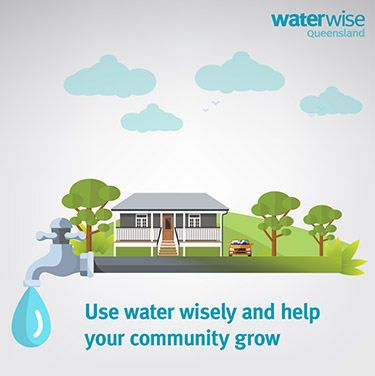
How much water do you use?
Knowing how much water you use, and understanding the ways you use water can help you find ways to become more waterwise. Check out our water savings tips for your home (PDF, 519KB) or do a simple waterwise quiz (PDF, 174KB) to help find ways to become more waterwise.
There are a few simple ways to find out how much water your household uses:
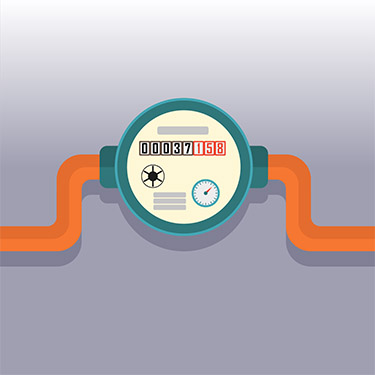
- Check your water rate notice. This will show your household’s daily water consumption and an average figure for households in your area.
- Learn how to read your water meter to check for leaks (PDF, 576KB) at your property.
- Be a water detective and undertake a home water audit (PDF, 741KB).
Once you know how much water you use, contact your local council to find out whether there is a voluntary water target in your local area. If one doesn’t exist, set your own! Your aim is to use less water, so make sure you set an achievable target.
Find out more
- Refer to this guide for more information about waterwise in each room of your home.
- Find out more about the water rating labels regulated under the Water Efficiency and Labelling Standards (WELS) Scheme.
- Discover what makes a waterwise home (PDF, 519KB).
- Learn more about water leaks.
- Read more about water’s journey (PDF, 1.0MB) or view this short animation.
- Do you want to be a waterwise gardener? Go to the waterwise gardening web pages to find out more.
- Find out how you can be waterwise at work.
-
Kitchen
There are many ways to use water efficiently in the kitchen.
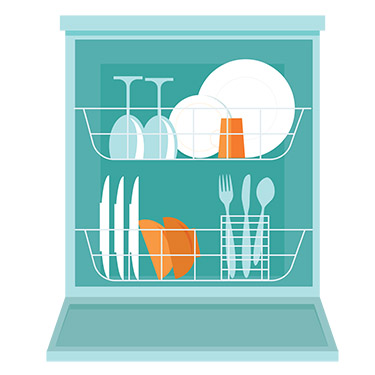
- Use the dishwasher only when full. Running a full load in a water-efficient dishwasher uses less water than washing dishes by hand. If leaving dishes overnight, use the dishwasher’s rinse function, rather than the sink.
- Scrape your dishes and soak your pots and pans to remove food rather than rinsing them under running water.
- Rinse vegetables in a plugged sink or basin, not under a running tap, and then use the water on your garden.
- Don’t use running water to defrost food. Place your frozen food in the fridge to thaw overnight.
- While waiting for water to heat, collect it in a bottle and put it in the fridge. Running a tap until it’s the right temperature wastes up to a bucket of water a minute.
- Think before putting water down the sink! Empty water bottles onto the garden, pot plants or in pet bowls.
Find out more
- Learn about Smart Approved WaterMark.
- Refer to the Water Efficiency and Labelling Standards Scheme. (WELS)
-
Bathroom
Most homes use more water in the bathroom than in any other part of the house. It’s a great place to start looking for ways to save water.
Showers
More than a quarter of your household water use is typically in the shower.
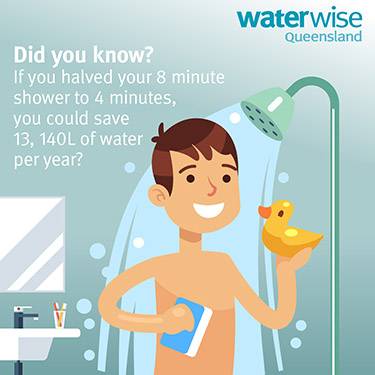
- Shower for 4 minutes or less – check out the 4 minute shower songs playlist on Spotify! Reducing a shower by 2 minutes can save up to 2 buckets of water and save energy!
- Install a water-efficient shower head (with a WELS rating of 3 stars or more). In 4 minutes, a shower head with a WELS rating of 5 stars will save over a bucket of water compared to a 3 star shower head.
- Insulate your hot water pipes. This means you won’t need to wait as long for the hot water to flow through—saving you both water and energy.
- Make sure your hot water system thermostat is not set too high.
- While waiting for the water to heat, collect it in a bucket and use it on your garden.
Toilet
Within a typical household over 10% of water used inside the home is flushed down the toilet. The following tips can reduce the amount of water used and in turn help reduce your water bills.
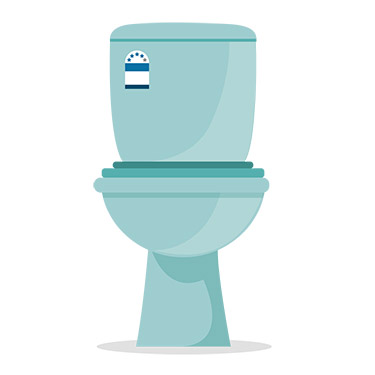
- Use the half-flush option and save nearly 6 buckets of water in a week! Remember to only flush the 3Ps (pee, poo and (toilet) paper); even if the label says it’s flushable it could still cause blockages in your pipes or at the wastewater treatment plant. Find out more about water’s journey (PDF, 1.0MB) beyond your tap.
- Install a toilet that has a WELS rating of 4 stars or more.
- If you have a rainwater tank and receive regular rainfall, use tank water to flush. Talk to your plumber about having your rainwater tank internally plumbed to your toilet.
- A continuously running toilet can waste up to 18 buckets of water a day! Check for leaks by putting a little food colouring in the cistern. If the colouring begins to appear in the bowl without flushing, the cistern rubbers need to be repaired. Flush twice as soon as the test has been completed to prevent staining.
Bath and basins
You can reduce water use in baths and basins – try these tips!
- Turn off the tap while cleaning your teeth, soaping your hands or shaving – you’ll save over 6 buckets of water a day!
- Use as little water as possible in the bath by placing the plug in before you turn on the tap and fill the bath to less than a third full. You could also bath small children together.
- Swap your bath for a 4 minute shower and you could save over 65 buckets of water in a week – in a year, that’s enough water to fill a pool!
- Have a licensed plumber install flow restrictors and aerators to taps around the house.
- Replace your older-style tapware with taps that are WELS rated 3 stars or more.
-
Laundry
Selecting the right washing machine is the best way to save water and energy in the laundry. Choose a washing machine with a 4 star WELS Scheme rating or better; you could use up to 50% less water!
There are a number of other ways you can save water in the laundry.
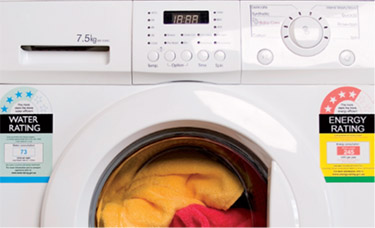
- Only use your washing machine with a full load. One less load per week can save over 11 buckets of water!
- Pre-treat stains to limit the need to rewash.
- When adjusting warm water tap flow, always turn the hot water down rather than the cold water up.
- Make sure that everyone picks up and sorts the clothes they wear each day so clean clothes don’t get washed by mistake.
- Use detergents that are biodegradable, low-phosphorus, low-sodium and low-nitrogen so you can divert grey water from your washing machine for immediate use on your garden (except vegetables).
Find out more
- Refer to the Water Efficiency and Labelling Standards Scheme (WELS).
- Learn more about water leaks.
- Read more about water’s journey (PDF, 1.0MB) or view this short animation.
-
Outdoors and pool
Outdoors
You can reduce your water use by changing the way you use water outside. A few simple one-off modifications to fittings and appliances can improve water efficiency.
- Use a trigger hose or bucket when washing your car and try to wash it on the lawn.
- Only water lawns and gardens when needed and use a timer on your irrigation system and ensure it is set to water between 5 and 10 am.
- Where possible, use a broom to sweep outdoor areas, or use a bucket rather than a hose.
Consider installing a rainwater tank (PDF, 3.4MB) for garden and outdoor use and have it plumbed to your washing machine and toilets. The benefits from a rainwater tank will be influenced by the weather patterns in your area. Read more tips on waterwise gardening.
Pool and spa
As a pool and spa owner, you can reduce water use in several ways.
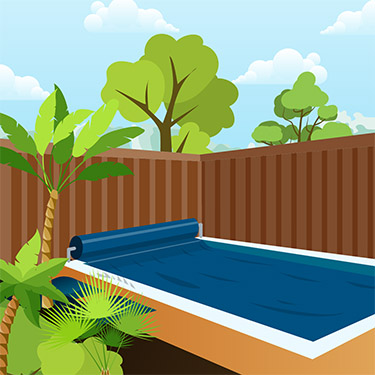
- Use a pool cover. A properly fitted pool cover can stop up to 97% of evaporation and reduce the amount of chemicals required to treat the water.
- Check your pool for leaks. A tiny leak could result in a large amount of water loss.
- Shade your pool to reduce evaporation and help avoid the sun’s harsh rays while you swim.
- Maintain the correct chemical balance in your pool and clean it regularly.
- Top up your pool with rainwater runoff.
- When purchasing a new pool filter, look for a water efficient model. An energy efficient pump can also significantly save on energy costs. Find out more about being waterwise with your swimming pool and spa (PDF, 162KB).
-
Leaks
Many household leaks are not easily detected and can lead to high water bills.
You should check your water meter regularly (monthly or 3-monthly) to monitor and understand how much water you use. This will also help locate leaks early, saving you both water and money. A water audit (PDF, 741KB) of your household can also tell you how much water you use and if you might have a leak.
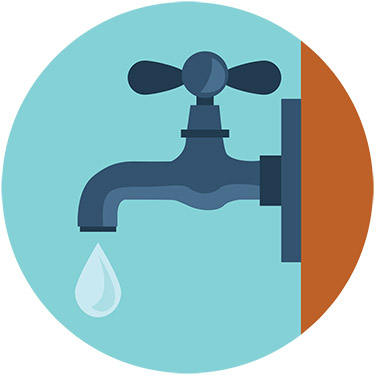
If you do not regularly check your water meter, the first sign of a water leak might be a higher than normal water bill.
A large amount of water can be lost due to leaking pipes and dripping taps. One slowly dripping tap can waste more than a bucket of water a week, while a visibly leaking toilet can waste up to 18 buckets of water a day.
Make sure you turn all your taps off properly; check for leaks and repair taps and keep all water fittings and equipment in good condition.
How to check for water leaks
- Turn off all taps tightly and make sure no-one will be using any water on your property for the next hour.
- Find your water meter and write down the numbers shown.
- After 1 hour, check the water meter reading. If the numbers have changed, there may be a leak.
- If it appears there is a leak, the first item to check is the toilets. To check if you have a leaking toilet, turn off the water valve located behind each toilet. Put a little food colouring in the toilet cistern. If, without flushing, the colouring begins to appear in the bowl, the cistern rubbers need to be repaired. Note: After the test, flush your toilet twice to prevent the food colouring from staining the toilet bowl.
- While the toilet water valves are turned off, repeat steps 1 to 3. If the numbers have increased, there is a leak somewhere else on your property. Check for leaks from taps, showers, your hot water system, and look around outside for unusually wet areas. For further investigation, contact a licenced plumber to identify and take the necessary steps to repair the leak.
Read further information about detecting leaks and reading your water meter (PDF, 727KB).
Homeowner’s responsibility
You are responsible for installing and maintaining any plumbing that is on your property (i.e. pipes and fittings on your property side of the water meter connection point). You are also responsible for all water used on your property, including water leaks. A concealed leak is a leak that is hidden from view as they are underground or in the internal plumbing, for example from a broken or cracked water pipe that is within a wall of your house. Regularly reading your water meter can help identify if you have a concealed leak. Read about doing a water audit (PDF, 741KB).
If you would like to discuss your water charges in relation to a concealed leak you should contact your water service provider.
Concealed leaks remissions
On 2 August 2023 the Queensland Government announced a remission scheme to provide relief to customers facing large water bills as a result of a concealed leak on their property.
The remission scheme will help eligible customers with the financial impact of a concealed leak and help prevent them from falling into financial hardship by providing a credit on the excess state bulk water charge of 100 per cent for eligible pensioners and 70 per cent for all other eligible customers.
This is in addition to the remission that South East Queensland (SEQ) water service providers offer under the South East Queensland customer water and wastewater code (PDF, 727KB). A concealed leak remission is a reduction in the amount payable on your water bill to offset the cost of the water lost due to a concealed leak.
Waterwise home, 28 Aug 2023, [https://oss-uat.clients.squiz.net/environment/water/residence/use/home]
This document is uncontrolled when printed. Before using the information in this document you should verify the current content on https://oss-uat.clients.squiz.net/environment/water/residence/use/home.